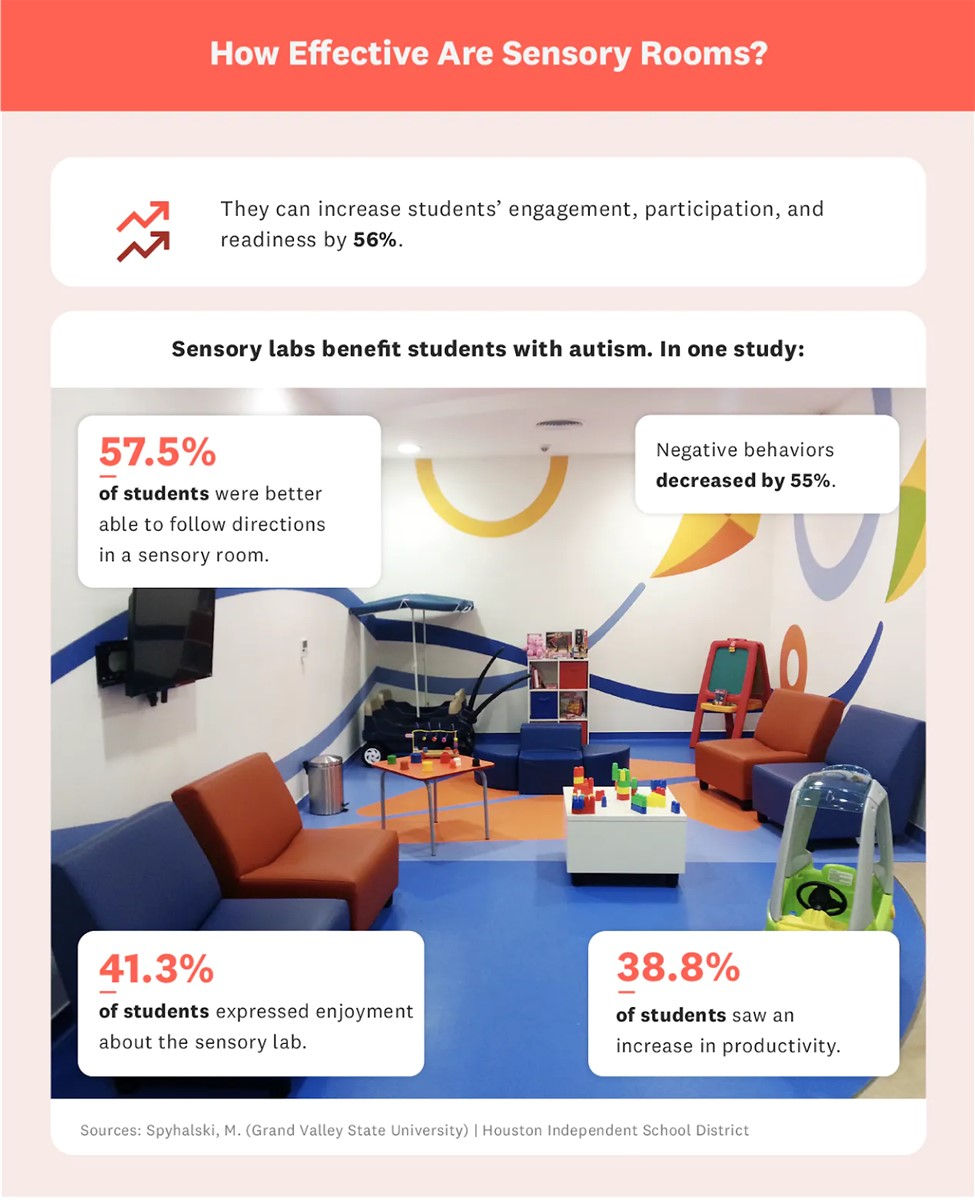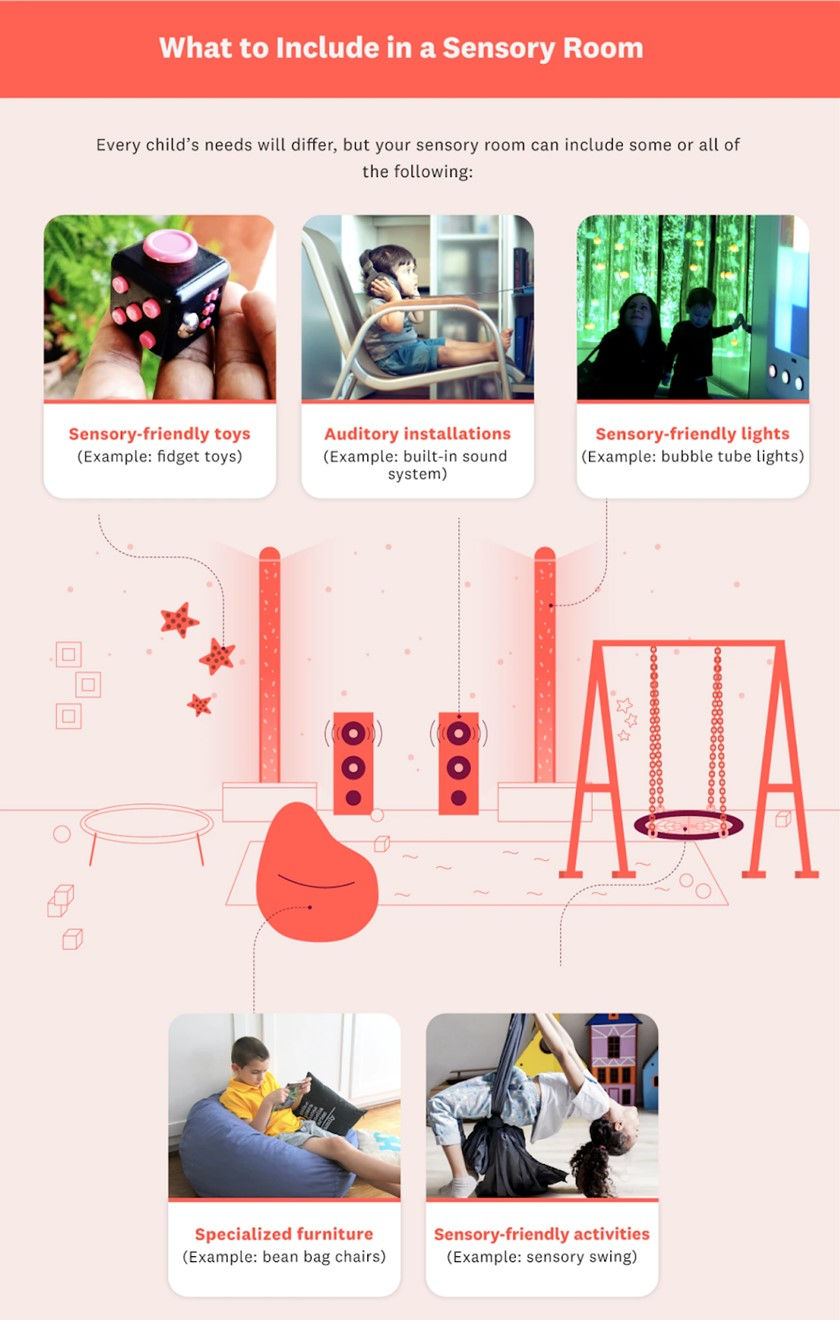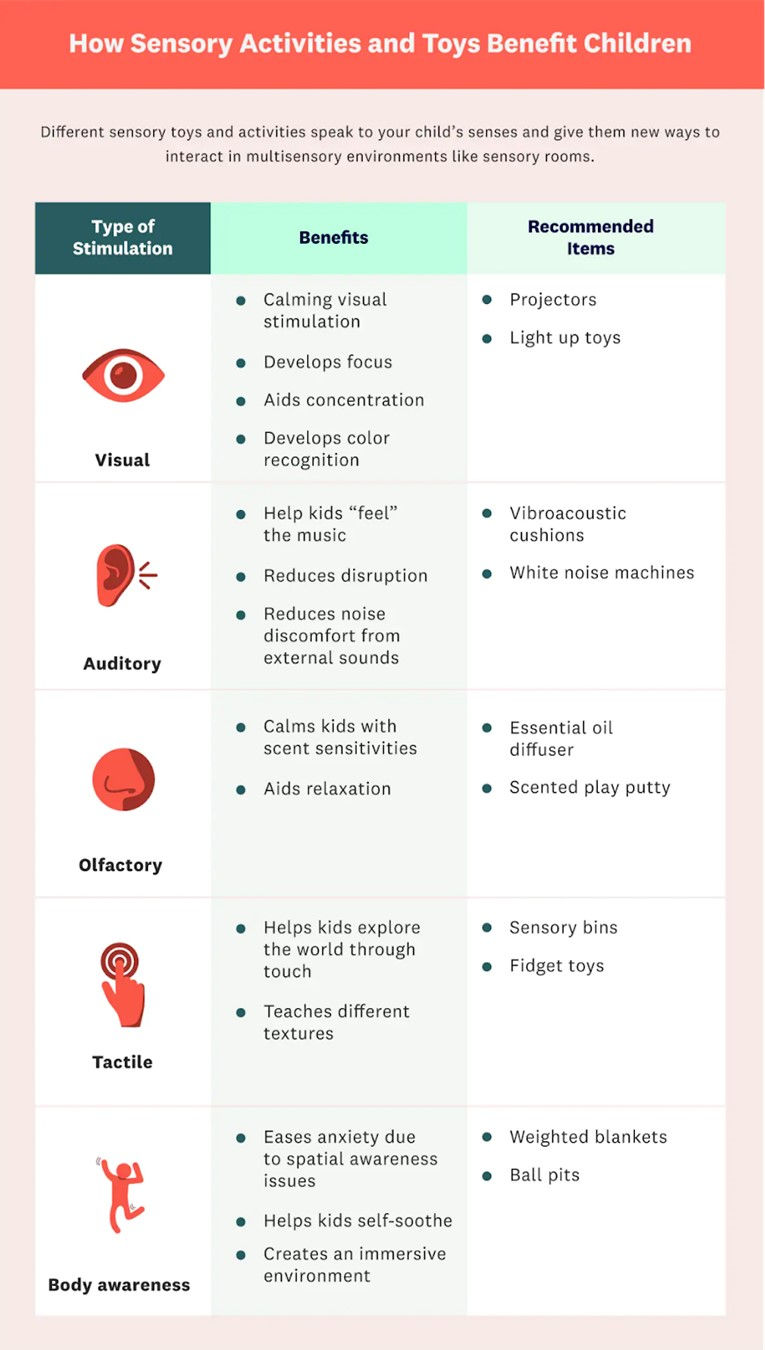How to Create a Sensory Room for Children with ASD, ADHD, and Sensory Sensitivities
- Susan Donohoe
- Apr 7, 2023
- 6 min read
Updated: Mar 31
Interested in learning more about nurturing development through sensory rooms? We have some great sensory room ideas for you!
For many children, sensory sensitivity interferes with normal childhood development. Be it an aversion to bright colors or disliking certain textures, traditional play spaces aren’t suitable for these children.
Sensory rooms are safe, customized alternatives to traditional playrooms. Designed with the child and their sensitivities in mind, sensory rooms embrace all the senses in fun, comfortable means. If you don’t have a separate playroom, you can also consider making a sensory bedroom.
Children with autism spectrum disorder (ADH), ADHD, and other sensory sensitivities thrive in safe spaces. Sensory cocooning can help children to self-regulate and decompress, which are both excellent life skills. As well, in a sensory room designed around the child’s likes and needs, you and your child know they’re in a safe environment.
Every sensory room looks different, because not every sensory sensitivity is the same. Here are four key areas to consider when creating a sensory room that truly caters to your child's unique sensory experiences.

Considerations When Making a Sensory Room For Your Child
1. Always Consider The Colors For Sensory Rooms
Understanding the Impact of Colors
Colors are a significant source of emotion. Bright, bold colors often cause overstimulation in children with sensory processing disorders. On the other hand, softer colors soothe and calm. When constructing your sensory room, pay attention to the colors.
Bright colors like red, orange, and yellow are warm and energetic. For some kids, these colors energize and stimulate. Toys with these colors make great visual indicators. However, avoid using too many bright colors. Bright walls, for example, hinder focus, or even cause overstimulation.
Cool colors include blue, purple, and green. These colors calm children, soothing those with sensory disorders. Pale pink is a pleasing color for those with autism. Likewise, pale yellow provides a touch of energy without being too invasive.
Natural colors, including browns, soft pastels, and earthen hues, reduce hyperactivity. Walls made with these colors help avoid the cold, distant feeling of white walls. Also, their natural colors are easier to process than bright tones.
Color Coordination for Harmony
Don’t be afraid to color-coordinate the sensory den. For instance:
Use brighter colors (when and where appropriate) on active toys and activities.
Cool blues and greens are great for pillows, beds, and other comforting surfaces.
Walls of pale pink or sandy tan create a comforting tone throughout the room.
Color is vital in a sensory room. Before diving into the sensory room, though, take some time to determine your color scheme.
2. Use Pleasing Sensory Lights
Bright (like fluorescent lights), flashing, or otherwise distracting lights create sensory overload in many children. Using sensory-safe lighting is a great way to make an inviting room.
Sensory-Safe Lighting Alternatives
Lava Lamps: The slow-moving soft shapes are pleasing to watch, and they lack the electronic hum of other light sources.
LED Cubes: These are gently-pulsing cubes of color. Many are programmable or app-controlled to ensure pleasing and soothing colors.
Fiber Optics: These offer tactile stimulation, as they are soft and safe to touch. Plus, fiber optics come in almost any form, even as flooring.
Bubble Tubes: A bubble tube light is a visually captivating sensory device that features a column of water illuminated by colorful LED lights, creating mesmerizing bubbles that rise through the tube, providing both visual stimulation and a calming effect.
Once you’ve considered the lights, think about the surfaces. Many children have sensory issues from reflective surfaces. Avoid light sources directly overhead a reflective surface. Or, cover surfaces with non-reflective materials, including fabric, feathers, or cushioned foam.
Lighting plays a crucial role in creating the calm needed in a sensory room. And when a space is calm, so are the occupants.

3. Add Soft Surfaces Like Crash Mats, Puffy Chairs, and Textures
While a sensory room promotes calm, your child might need some extra prompting. Sometimes, they’ll want to jump around or practice their tumbling. A sensory space should always be safe. So, if your child enjoys a bit of activity, ensure the room is full of soft surfaces.
Ensuring Safety and Comfort
Crash mats are a great option to line the floor. From soft foam to puffy cushions, these mats create a peaceful landing place for your rambunctious kids. Crash mats and pads also provide safe places for exercise and yoga that help promote calm.
Beanbag chairs fill a similar role. Intended more for sitting, they are another soft surface to keep your children safe. Bean Bag chairs are great for kids who have difficulty sitting still. As they conform to the body, they create unmatched comfort.
Weighted blankets and white noise machines can help provide comfort and reduce anxiousness during downtime.
Consider the textures of crash mats, bean bag chairs, and other aspects of the room. Tactile stimulation is important, but it is often too much for some children with tactile sensory issues.
Desensitization Through Exploration
Avoid triggering textures, but encourage your children to explore. Minor additions, like a textured blanket, help gently desensitize children with sensory issues.
While a sensory room promotes calmness, some children may seek extra activity. Ensure the room is equipped with soft surfaces like crash mats and puffy chairs to provide a safe space for jumping and tumbling. Integrate textures thoughtfully, allowing children to explore without triggering sensory issues.
4. Sensory Activities and Toys
Not all children with sensory sensitivities avoid activity. In fact, safe but hands-on sensory activities help teach skills and promote fine motor skills. Even children with tactile sensitivities benefit from a sensory experience using toys and activities. Like other aspects of the sensory room for ADHD or autism, base these on your child’s needs.
Activities for Sensory Rooms
Children with sensory processing disorders deserve to have as much fun as every other kid. Here are some everyday activities and toys to offer some sensory stimulation:
Sensory bins: Fill bins with items of various textures, including beans, pasta, sand, and more. Include scoops and tools to manipulate the objects. These promote tactile adventuring, as well as sensory processing. Note, though, that this activity can be extremely difficult for children with aversions to tactile stimulation and therefore should be adjusted to the sensory comfort of a child while still providing a gentle challenge.
Ball pits: Perfect for the active child, ball pits are full of tactile and proprioceptive stimulation. Ball pits provide exercise, motor skills, and body control. Also, with hidden toys or textured objects, ball pits become treasure troves of fun.
Sensory swings: Available in many forms, sensory swings provide areas of peaceful rest or active fun. Cocoon and wrapping swings are great calming tools, and might even lull a child to sleep. Log swings and hammocks promote activity in a safe and controlled room.
Tactile tools: Tools are great for kids with tactile sensory sensitivities. They allow kids to handle objects like food or materials. Chopsticks or other smaller tools promote fine motor control, as well. And objects like paintbrushes turn art into fun hand-eye lessons.
Don’t forget exercise-based objects, too. Colorful jump-ropes, textured exercise balls, bean bag games, and illuminated stepping stones help build coordination. Also, they let your kids blow off steam at the same time. Even a simple dance party is perfect for getting moving and having fun with your kids.

Overview of Sensory Bedroom Design Considerations
For a comprehensive guide on bedroom design considerations for kids with autism or sensory processing issues, explore This Old House's guide in honor of National Disability Awareness Month: Bedroom Design for Kids with Disabilities.
They have put together this comprehensive guide in honor of National Disability Awareness Month. Whether your child is sensory avoidant or sensory seeking, this guide will offer helpful insight to your design choices.
Creating Safe Spaces for Thriving Development
Whether you have a child with autism, ADHD, or sensory processing disorders, they may have many sensory-based needs and limitations. Often, this leads to social anxiety and stress at “not fitting in.” Sensory rooms provide safe spaces for your children to thrive and develop.
With guided play and a calm environment, children learn to experience their surroundings. Indeed, they might even become desensitized to some of their sensory issues.
Work with your children and their professional team to create the perfect sensory room. The entire family will love it.
Products You May Like:
